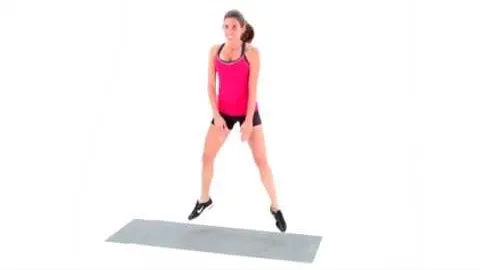
The Frog Jump Exercise: A Powerful Workout for Strength and Agility
Introduction
The Frog Jump exercise is a dynamic and challenging workout that targets multiple muscle groups while improving strength, endurance, and agility. This plyometric exercise combines elements of both cardio and resistance training, making it an effective choice for individuals seeking to enhance their overall fitness levels. In this article, we will explore the benefits, proper form, variations, and precautions associated with Frog Jumps, providing you with the tools needed for a successful and safe workout.
Benefits of Frog Jumps
Improved Lower Body Strength: Frog Jumps primarily target the muscles of the lower body, including the quadriceps, hamstrings, glutes, and calves. Performing this exercise regularly can help strengthen these muscles, leading to enhanced power and stability during other activities.
Increased Explosiveness: Frog Jumps are a plyometric exercise, which means they involve rapid and forceful movements that aim to improve explosiveness. This explosive power is beneficial for activities such as sprinting, jumping, and quick directional changes, making Frog Jumps an excellent choice for athletes and those looking to enhance their athletic performance.
Cardiovascular Conditioning: Due to the continuous jumping and squatting motions involved in Frog Jumps, this exercise provides an effective cardiovascular workout. The elevated heart rate and increased oxygen consumption during the exercise help improve overall cardiovascular endurance and stamina.
Caloric Burn: Frog Jumps are a high-intensity exercise that engages multiple muscle groups simultaneously. As a result, this exercise can help burn a significant number of calories in a short period, making it an attractive choice for individuals looking to lose weight or maintain a healthy body composition.
Proper Form for Frog Jumps
To perform Frog Jumps correctly and minimize the risk of injury, follow these steps:
It is crucial to maintain proper form during Frog Jumps to avoid any strain or injury. Ensure that your knees stay aligned with your toes throughout the exercise, and be conscious of your landing to prevent excessive stress on your joints.
Variations of Frog Jumps
Single-Leg Frog Jumps: Instead of using both legs simultaneously, perform Frog Jumps using only one leg at a time. This variation increases the challenge and engages the stabilizer muscles of the hips and core.
Weighted Frog Jumps: Holding a dumbbell or kettlebell in front of your chest can add resistance and further enhance the strength-building benefits of Frog Jumps. Start with a manageable weight and gradually increase as your strength improves.
Broad Jumps: In this variation, perform a long jump forward, extending your legs fully before landing. This exercise focuses on explosive power and lower body strength.
Precautions and Considerations
While Frog Jumps offer numerous benefits, it is essential to keep the following precautions in mind:
Warm-up: Prior to performing Frog Jumps, it is crucial to engage in a thorough warm-up routine that targets the lower body muscles. This helps increase blood flow and reduces the risk of muscle strains or pulls.
Proper Surface: Ensure you are performing Frog Jumps on a suitable surface that provides enough shock absorption, such as a gym mat or grass. Hard surfaces like concrete can increase the risk of joint and knee strain.
Gradual Progression: If you are new to Frog Jumps or plyometric exercises, start with a lower number of reps and gradually increase the intensity and volume over time. This allows your body to adapt and reduces the risk of injury.
Individual Limitations: If you have any pre-existing knee, hip, or ankle injuries, consult with a healthcare professional before incorporating Frog Jumps into your exercise routine. They can provide guidance on modifications or alternatives to minimize the risk of aggravating any existing conditions.
Conclusion
The Frog Jump exercise is a versatile and effective workout that engages large muscle groups, improves strength and explosiveness, enhances cardiovascular endurance, and aids in weight loss. By following proper form, exploring variations, and taking necessary precautions, you can safely incorporate Frog Jumps into your fitness routine. Remember to listen to your body, gradually progress, and seek professional advice if needed. Get ready to leap towards stronger, more agile, and fitter you with the Frog Jump exercise!
If you're looking for a gym, fitness club or yoga studio, you've come to the right place.
You can find information about gyms in your area. Browse catalog of gyms and find gyms with classes which are you looking for.
On gym page you can find simple information like address, phone or website. You can find list of available classes. You can check availability of personal training or small group classes. On place page you can also see information about open hours.
You can find gyms near you with amenities, courts, studios and equipments.
Use our map to find gym at your city or district.
In Gym Navigator you can find list of exercises with movies for many body parts.
You can browse exercises catalog and find exercises the best of you.
You can also find exercises grouped into workout plans, which you can use to improve you body. Each routine show you exercises one by one and give you possibility to count you progress and count down rest time.